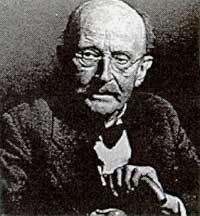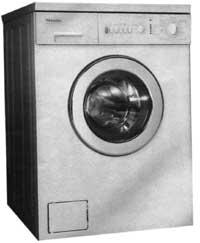Mr. Einstein in pioneering times
2000/02/01 Kortabarria Olabarria, Beñardo - Elhuyar Zientzia Iturria: Elhuyar aldizkaria
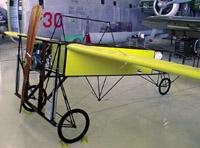
At the end of the century, you can read the 100 years of science and technology gathered month by month and decades. The facts have been numerous, too numerous to analyze in depth what has been called "the century of science", so someone may perceive some error. You have to choose and, as is known, the options do not always like everyone. In any case, as it is said in these cases: not all, but all there are.
XX. The first decade of the 20th century, perhaps the rest, due to the impact and influence that his work has had, can be fulfilled calmly by a person: Albert Einstein.
Declared "dependent scientist" by various media, he was born on March 14, 1879 in the German city of Ulm. Although he spent most of his youth in Munich, at 15 he moved to live in Pavija (Italy). One year there he finished his studies in Physics in Switzerland and joined teaching at the Polytechnic Institute of Zurich. In 1905 he published the Theory of Special Relativity. In two words, the theory says that it is impossible to travel at the speed of light, or more, and that a moving object has its own space and time with another in motion. The publication of the theory meant a radical change in the way of seeing Physics, by eliminating the concept of absolute time that characterized classical mechanics, and so much so in absolute space. Therefore, the theory of classical physics, the value of the laws of mechanics for the integrity of the universe, began to break. The total rupture came in 1916, when Einstein was able to explain the Theory of General Relativity.
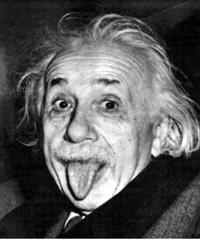
Although the Theory of Relativity eliminated the foundations of classical Physics, it was not able to question the deterministic theory of Nature, a modern view of the universe. To the deterministic model the crisis came through Quantum Mechanics. Max Planck began the crisis by introducing the concept of energy in physics. XIX. He broke 20th century physics. Nor did Planck himself realize it; Einstein understood that light could sometimes act as a group of particles — photons — and the behavior of wave nature to others. However, until the third decade of the century, these theories had no scientific progress.
It is not as well known as Einstein and Planck, but yet at the beginning of the century there was another name worth mentioning: Constantin Tsiolkovski. This Russian physicist demonstrated by mathematical theories that man could travel to space and reach the planets. He was seer and time has given him reason.
Apart from the main theories or tendencies, there are XX. Another representative characteristic of the first decade of the twentieth century was the era of pioneers, years of courageous actions.
To realize this, the field of transport, especially aircraft, can be significant, as the advances were spectacular. You have to start somewhere and a mythical name: The Harley Davidson engine was presented to the public in 1903. Another mythical name, which has been named "the best car ever built": Ford T car, first car in series and with standardized components.
Like the tools to walk faster on earth, the dream of flying materialized in the first decade. In 1907, Frenchman Paul Cornu invented the first helicopter, despite the few seconds of flight. The first flight of history dates from December 17, 1903, performed by the Wright brothers. Two years later, Frenchman Louis Bleriot performed a feat of great impact: Cross the English channel on a wooden plane and piano rope.
There were also advances in the sea. In fact, the first underwater trip to the history of humanity dates from 1904, from Portsmourghth to the island of Wigt.
The revolution also came to the houses. In the field of appliances the first electric washing machine was invented. To streamline housework, like washing machine, the vacuum cleaner is from this first decade of the century as well as air conditioner.

In the field of chemistry bakelite was invented, the first plastic from chemicals, used to make pans of pans, pans, etc. In this way, the age of plastics began in some way. The first procedure for ammonia synthesis was also carried out. It was made by the Germans Karl Bosch and Fritz Haber.
Advances in medicine were important. The product was released by the German Serologist Paul Erlich. So syphilis that caused great problems was the first medicine that somehow faced the disease infection. In 1907 the first blood transfusion was performed. So did organ transplants. C. Eduard The Austrian ophthalmologist Zirm managed for the first time to transplant the cornea of an eye thanks to advances in disinfection, anesthesia and surgical equipment. And the invention of X-rays XIX. Although it is century, it is worth mentioning the physicist Wilhelm Roentgen, who in 1901 received the Nobel Prize for having invented X-rays.
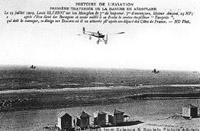
As in other areas, the first steps were taken in the communication tool for leisure and work. The precedent of the current telefax is of this decade, the telephotographer. It was invented by German Arthur Korn and used by Daily Mirror to send photographs between Paris and London. And since pictures have been taken, we must mention the Brownie camera of Kodak, which was at that time. There was also progress in the cinema, such as the camera and the film that Thomas Alba Edison designed and patented.
Some of them, but also others:
- 1901, Marconi managed to send radio signals between both sides of the Atlantic.
- 1903, after hearing rumors of the awarding of the Nobel prize, the French physicist Pierre Curie publicly stated that the investigations were not carried out by himself, but the result of the collaboration with his wife Marie Curie. The declaration aroused the fire, since then no importance was given to female work.
- 1903, electric shaver.
- 1907, first gold trial.
- 1907, Lee De Forest patents the electronic valve. This valve, until the 1960s, was basic in electronic devices.
- 1908, the greatest object that has come from space collided with Earth. He played in Siberia, in the territory of Tunguska, releasing enormous energy.
- 1909, the expedition of Ernest Shackleton and Douglas Mawson was 150 km from the South Magnetic Pole.

Gai honi buruzko eduki gehiago
Elhuyarrek garatutako teknologia





